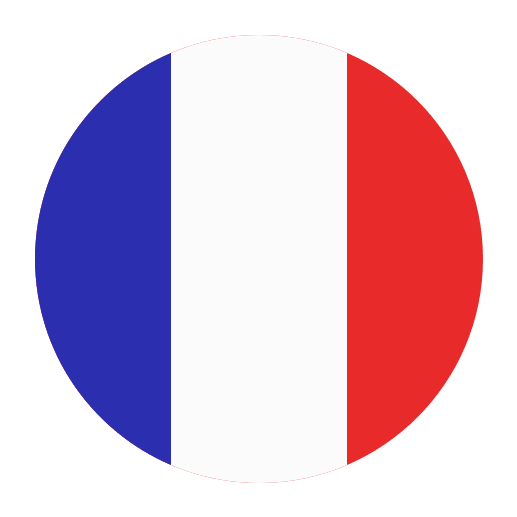Learning a new language can be an incredibly rewarding experience, and French is no exception. Known as the language of love, French is spoken by over 275 million people around the world. One effective method for learning French is through the use of flashcards. These versatile tools can help you memorize vocabulary, understand grammar rules, and even practice pronunciation. In this article, we will explore how to use French learning flashcards effectively, providing you with a comprehensive guide to make the most out of this tried-and-true learning method.
Why Use Flashcards for Learning French?
Flashcards are a powerful learning tool for several reasons. First, they leverage active recall, which involves retrieving information from memory, thus reinforcing learning. Second, flashcards utilize spaced repetition, a method where you review information at increasing intervals, ensuring that you remember it long-term. Lastly, flashcards are highly portable and customizable, making them an ideal tool for language learners at any level.
Types of Flashcards
Before diving into how to use flashcards effectively, it’s important to understand the different types available:
Physical Flashcards: These are traditional, paper-based cards that you can write on. They are great for tactile learners who benefit from physically handling learning materials.
Digital Flashcards: These are electronic versions of flashcards that you can create and use on various apps and websites. They often come with additional features such as audio pronunciation, images, and spaced repetition algorithms.
Pre-Made Flashcards: These are flashcards that have been created by others, often available for purchase or free download. They can save you time but may not be tailored to your specific learning needs.
Custom Flashcards: These are flashcards you create yourself. They are highly customizable and can be tailored to focus on areas where you need the most practice.
Creating Effective Flashcards
Creating your own flashcards can be one of the most effective ways to learn French. Here are some tips for making flashcards that will maximize your learning:
Focus on One Concept Per Card
Each flashcard should focus on a single concept, such as a word, phrase, or grammar rule. This makes it easier to process and remember the information. For example, if you’re learning vocabulary, one side of the card can have the French word “chat” (cat), and the other side can have the English translation.
Use Images and Colors
Visual aids can enhance memory retention. Whenever possible, include images that relate to the word or concept. For example, if you are learning the word “pomme” (apple), include a picture of an apple. Additionally, using colors to categorize different types of information (e.g., verbs, nouns, adjectives) can help you quickly identify and recall information.
Incorporate Example Sentences
Context is crucial for understanding how words and phrases are used in real life. Include example sentences on your flashcards to provide context. For example, for the word “manger” (to eat), you could write: “Je veux manger une pomme.” (I want to eat an apple.)
Use Both Sides of the Card
Make sure to utilize both sides of the flashcard. One side should have the French word or phrase, and the other should have the English translation. For grammar rules, one side can have the rule, while the other side has examples.
Using Flashcards Effectively
Once you have created your flashcards, the next step is to use them effectively. Here are some strategies to help you get the most out of your French learning flashcards:
Practice Regularly
Consistency is key when learning a new language. Set aside time each day to review your flashcards. Even just 10-15 minutes a day can make a significant difference over time. Regular practice helps reinforce what you’ve learned and keeps the information fresh in your mind.
Utilize Spaced Repetition
Spaced repetition is a powerful technique that involves reviewing information at increasing intervals. Many digital flashcard apps, such as Anki or Quizlet, have built-in spaced repetition algorithms that automatically schedule reviews at optimal times. If you’re using physical flashcards, you can manually organize them into piles based on how well you know each card and review them accordingly.
Mix Up Your Decks
Variety is important to prevent your study sessions from becoming monotonous. Mix up your flashcard decks to include a range of vocabulary, grammar, and phrases. This will help you become more well-rounded in your language skills and keep your practice sessions interesting.
Say It Out Loud
Pronunciation is a crucial aspect of learning French. As you review your flashcards, say each word or phrase out loud. This will help you practice your pronunciation and reinforce auditory memory. If you’re using digital flashcards, take advantage of any audio features to hear native pronunciation.
Test Yourself
One of the most effective ways to learn is to test yourself regularly. As you go through your flashcards, try to recall the information before flipping the card over. This active recall process strengthens memory and helps you gauge your progress.
Group Study
Studying with others can be a fun and effective way to learn. Find a study partner or join a language learning group. You can quiz each other using flashcards, practice conversations, and provide mutual support and motivation.
Advanced Flashcard Strategies
Once you’ve mastered the basics of using flashcards, you can incorporate more advanced strategies to enhance your learning experience.
Use Mnemonics
Mnemonics are memory aids that help you remember information through associations. For example, to remember the French word “oiseau” (bird), you might create a mental image of an “o” (the shape of a bird’s egg) and the word “seau” (bucket) to form a memorable association. Incorporating mnemonics into your flashcards can make learning more engaging and effective.
Focus on Problem Areas
Identify areas where you struggle the most and create flashcards specifically targeting those areas. For example, if you have trouble with irregular verbs, create a separate deck for those verbs and review them more frequently. Focusing on your weaknesses will help you improve more quickly.
Incorporate Listening and Speaking Practice
Language learning is not just about reading and writing; listening and speaking are equally important. Use flashcards that include audio clips of native speakers. Practice repeating the words and phrases to improve your pronunciation and listening skills. Some digital flashcard apps offer features that allow you to record yourself and compare your pronunciation to native speakers.
Use Flashcards for Cultural Insights
Language and culture are deeply intertwined. Create flashcards that include cultural notes or interesting facts about French-speaking countries. For example, you could have a flashcard with the word “baguette” and a note about its significance in French cuisine. This will make your learning experience more enriching and help you understand the cultural context of the language.
Conclusion
Flashcards are a versatile and effective tool for learning French. By creating customized flashcards, practicing regularly, and incorporating advanced strategies, you can make significant progress in your language learning journey. Remember to stay consistent, be patient with yourself, and enjoy the process. With dedication and the right approach, you’ll be speaking French with confidence in no time. Bonne chance (good luck)!

